It was an easy decision to run a Cyberdeck Challenge in 2023 — after all, it was far and away one of our most popular contests from last year. But what was much harder was sorting out the incredible array of bespoke computers that readers have been sending in for the last few months.
Our judges have painstakingly whittled down the list of entries to get our top three winners, each of which will be awarded $150 in credit from the good folks over at DigiKey. But there were simply too many fantastic custom computers in the running to let everyone else go home empty-handed, so we’ve decided to also break out some $50 Tindie gift cards for the decks that best exemplified this year’s special categories.
Without further ado, let’s take a tour through the judge’s top picks for this year’s Cyberdeck Challenge!
First Place: Zvychai One
 While the judges had a hell of a time placing the rest of the decks in this competition, the decision to give the top spot to [mkdxdx]’s Zvychai One was unanimous, with each and every judge putting it at the top of their respective list.
While the judges had a hell of a time placing the rest of the decks in this competition, the decision to give the top spot to [mkdxdx]’s Zvychai One was unanimous, with each and every judge putting it at the top of their respective list.
But really, is it any wonder? This gorgeous build absolutely nails the cyberpunk aesthetic, while also being a formidable computing and hacking device in its own right. The basic specs are about what you’d expect for a DIY cyberdeck, with a Raspberry Pi 4 coupled to a small mechanical keyboard and an LCD panel.
Where the Zvychai One really shines is in its expandability, as the 3D printed case features multiple ports and openings to take additional hardware such as sensors and displays. There’s also a rail mounting system that allows larger modules to be securely attached, such as an RTL-SDR “caddy” that features a clever fold-down antenna.
Second Place: Micro-PC
While some entries in this year’s Cyberdeck Challenge leaned hard into the more fanciful elements of cyberpunk culture, other’s instead set their sights on day-to-day practicality. Of these, our judges felt that the Micro-PC from [Matt Deeds] best managed to hit the target.
In the most basic of terms, it’s a small PC mounted to a plank. More specifically, an Intel Alder Lake N100 NUC bolted to a piece of laser-cut acrylic. Right out of the gate, that means it has way more processing power than anything powered by the ~$100 single-board ARM computers we usually see at the heart of these builds. But that also means it’s very power hungry, so there’s a beefy 65 W 20,000 mAh battery pack along for the ride to keep it well fed. With the addition of a tilting 5.5 inch 1920×1080 IPS display inside a 3D printed frame, it’s able to deliver desktop-class performance no matter where your hacking adventures take you.
While it might be somewhat simplistic from a technical standpoint, the Micro-PC is a great example of how a collection of high-tech gadgets can be cobbled together into a device that fits a specific user’s needs — one of the core tenets of the cyberdeck movement.
Third Place: TOP_LAP
Although we generally think of a cyberdeck as having a unique form factor that sets it apart from commercially available offerings, it’s hard to deny the phenomenal portability of the classic clamshell laptop. But while the outward appearance of [Ethan Russell]’s TOP_LAP might seem surprisingly traditional, the internals are anything but.
Built from laser-cut steel, this heavyweight machine has plenty of room onboard for a micro-ATX motherboard, a 7.3 Ah battery originally intended for an Freefly Astro commercial drone, and a massive 24 inch LCD display. When you’ve got to add gas struts just to hold the lid of your laptop open, you know things are getting serious.
A particularly nice touch is the custom STM32F091 board that communicates with the drone batteries over CAN. As you might expect given the $20,000+ drone they were designed to be slung under, the batteries in question are pretty advanced, and require a degree of sweet talking to be utilized. Luckily Freefly publicly published their CAN protocol (what a concept!), which made [Ethan]’s job that much easier.
Honorable Mention: Red V2
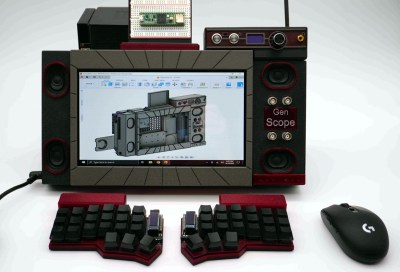 If the Cyberdeck Red V2 from [Gabriel] looks familiar, it’s because the original version took second place in the 2022 Cyberdeck Contest. But while the impressively appointed machine might look remarkably similar at first glance, nearly every component has been revised on this new and improved incarnation.
If the Cyberdeck Red V2 from [Gabriel] looks familiar, it’s because the original version took second place in the 2022 Cyberdeck Contest. But while the impressively appointed machine might look remarkably similar at first glance, nearly every component has been revised on this new and improved incarnation.
But for all that’s changed, one thing remains the same: this deck is packed to the gills with gear for electronic hacking. The onboard Digilent Analog Discovery 2 provides not only a two-channel 30 MHz oscilloscope, but also a function generator, logic analyzer, and voltmeter. It’s also packing a Great Scott Hack RF One software defined radio, a removable breadboard, and a short throw projector that lets you turn any flat surface into a second monitor.
Special Categories
This year, we had four Neuromancer inspired special categories which gave creators something extra to strive for. While it wasn’t required that entries take any of these categories into consideration, we asked our judges to keep them at the back of their mind while reviewing each deck, and had them nominate what they thought were the best examples.
Icebreaker
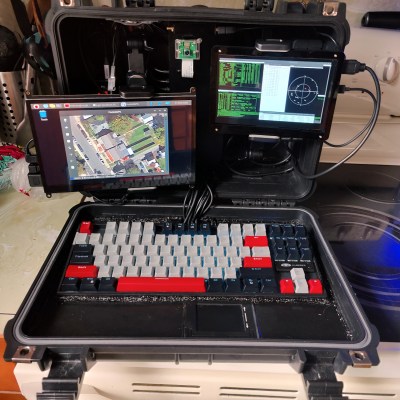 To qualify for the Icebreaker category, a cyberdeck needed to be ready to do some real work. While the more outlandish designs might be more fun to look at, here we were after the decks that had a clear practical application.
To qualify for the Icebreaker category, a cyberdeck needed to be ready to do some real work. While the more outlandish designs might be more fun to look at, here we were after the decks that had a clear practical application.
The Oni Mobile Command Center from [Brent] is a perfect example of this principle. While an undeniably cool looking piece of gear, its integrated GPS, RTL-SDR, and FM transmitter make it uniquely equipped for radio experimentation and research. It’s also packing a wide array of penetration testing tools, and its dual displays can help make it easier to monitor multiple processes simultaneously.
Even in a competition as closely matched as this one, finding a spot for [Garra]’s CyberSecDeck-001 was a particular challenge. As one of the commenters put it on the project page, in many ways its the archetypal cyberdeck. But ultimately, the judges were most impressed with the remarkable practicality of this particular deck.
While it still looks like something from Gibson’s imagination, [Garra] designed it to be a reliable workhorse. It’s robust case looks like it can take a proper beating, especially with the repurposed cupboard handles acting as a roll cage to protect the keyboard and screen. It also features a pair of Picatinny rails (also known as MIL-STD-1913 by the US military) which allows both custom and commercially available modules to be quickly and easily attached.
ROM Construct
 For a deck to qualify for this category, it had to demonstrate a particularly high level of customization. Keep in mind that a cyberdeck, by its very nature, is a bespoke computing device. As such, these are the builds that really took that core concept to the next level.
For a deck to qualify for this category, it had to demonstrate a particularly high level of customization. Keep in mind that a cyberdeck, by its very nature, is a bespoke computing device. As such, these are the builds that really took that core concept to the next level.
Of all the entries this year, the North American Cyberarms Cyberdeck by [Patrick Tait] was the most obvious choice for this particular category. The physical user interface on this machine, a combination of a 10-key board and wireless mouse, is so bonkers that we wager the average passerby would assume it’s not even capable of general computing. But if you’ve got the touch, this highly portable machine makes a great companion for distraction-free writing and programming.
Similarly, you’ve got to be a real Console Cowboy to wrangle [RobsonCouto]’s KOAT0 Portable Terminal. While at least this machine gives you a full keyboard, its vacuum fluorescent display only provides the user with a particularly meager 256 x 48 to work with. It’s doable — that’s enough pixels to get a few console lines in, and it’s even capable of rudimentary graphics, but it wouldn’t be anyone’s first choice in 2023. On the flip side, it’s absolutely gorgeous.
Dex Dealer
While there’s canonically nothing that really says a cyberdeck has to be mobile device, there’s certainly a trend in the community to shoot for some element of portability. But the sticking point is finding a way to reasonably power these machines while you’re out and about. For this category, the judges were looking for designs which seemed uniquely suited to operating without the benefit of a convenient AC outlet.
For hackers who still remember what sunlight looks like, the Solar Box built by [Nick Scratch] is an ideal companion. The lid-mounted solar panel can top off its internal 2,500 mAh battery, while its energy-sipping internals make sure you can squeeze out as much runtime as possible. That includes a Raspberry Pi Zero, an electronic paper display that’s ideal for showing static content, and a Sharp Memory LCD that refreshes quickly enough that you can use it for interactive tasks.
Though it doesn’t have the benefit of a solar panel to recharge itself, the judges also liked the approach [a8ksh4] used on the Thumb Term. This handheld is powered by just a single 18650 cell, which are so incredibly common that even in a post-apocalyptic wasteland, you shouldn’t have a problem scrounging up a few fresh cells. It was clear that a lot of thought was given to the power management on the Thumb Term, with a Pi Pico being used to monitor the battery level and alert the user appropriately when the available juice is getting low.
Turing Police
We knew this category, which focused on decks that were either made with or utilized artificial intelligence, was going to be a tough one. But AI tech is improving by leaps and bounds right now, so we figured we’d throw it out there and see what the community could come up with. In the end, we got good examples of both AI generation and utilization.
 The wearable Smart Companion & Observational Utility Tech (SCOUT), developed by [Quoc Duong], runs a custom developed AI assistant and connects to a wireless display. The AI software leverages several cloud services, so you won’t be going off-grid with this cyber assistant quite yet, but we appreciate the code being open source for those looking to spin up their own AI helper.
The wearable Smart Companion & Observational Utility Tech (SCOUT), developed by [Quoc Duong], runs a custom developed AI assistant and connects to a wireless display. The AI software leverages several cloud services, so you won’t be going off-grid with this cyber assistant quite yet, but we appreciate the code being open source for those looking to spin up their own AI helper.
While it doesn’t actively use AI, the Toddler’s Cyberdeck by [Josh] benefited greatly from the technology. After wiring up a collection of buttons, switches, and potentiometers to an Arduino Mega 2560, [Josh] turned to ChatGPT to create the code that ties it all together. He’s posted a link to the conversation that produced the final source code, which provides some interesting reading for those who may be curious about how these type of large language models can be put to use for practical purposes.
The Future is Now
If you ever need a reminder of just what the individual hacker or maker is capable of with today’s technology, you only need look at the meteoric rise of the cyberdeck. Just a few short years ago, we were looking at plywood decks held together with hot glue. Today, we’ve got custom computers that don’t just look like they could be Hollywood props, but manage to provide real-world functionality above and beyond the traditional consumer computer paradigm. The community has moved well past the “how” stage, and is now deep into the “why” — and we love to see it.
As always, special thanks to our sponsor DigiKey for helping make the 2023 Cyberdeck Challenge a reality. We’ll be announcing a new contest in the very near future, so stay tuned.


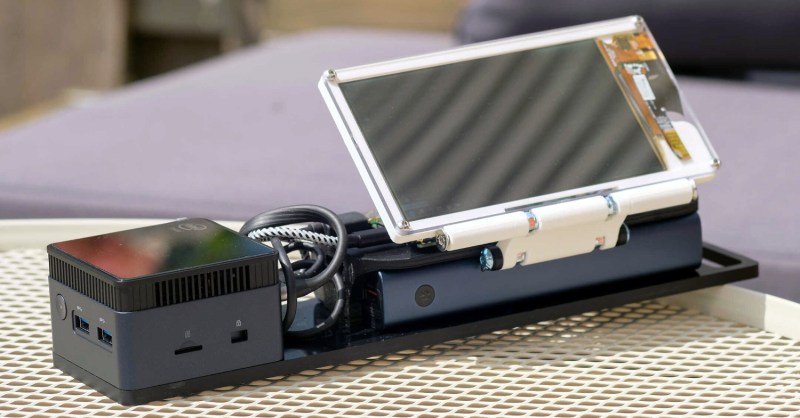

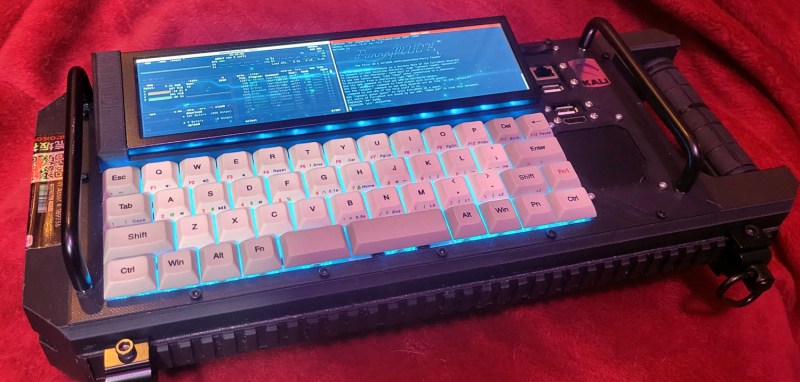

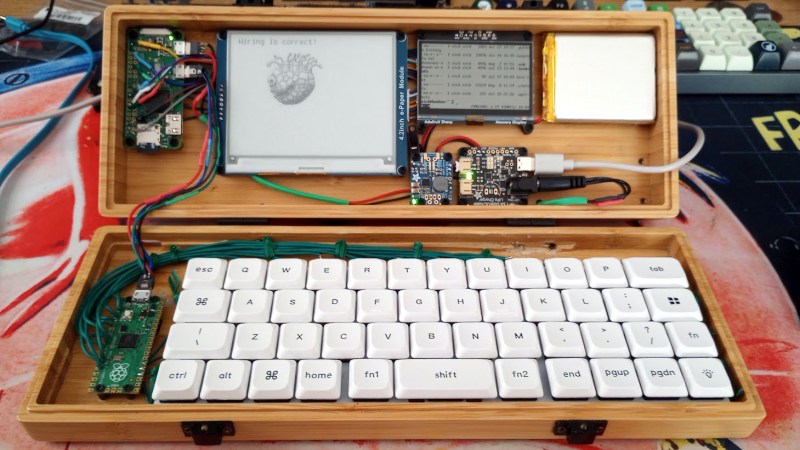
















(Micro-PC)
“In the most basic of terms, it’s a small PC mounted to a plank. More specifically, an Intel Alder Lake N100 NUC bolted to a piece of…”
I was disappointed it wasn’t bolted to a plank of Knotty Alder!
(Probably why it didn’t win 1st Place)
B^)
There is some impressive stuff here.
The CyberSecDeck-001 would be something I’d use personally. It’s a crazy system that, for me, hits everything I would want in a cyberdeck. I don’t understand why that one didn’t win. I mean, the Zvychai One is cool but I probably don’t understand the point of it.
I might actually look into building the CyberSecDeck-001 when I have the time. I want a cyberdeck that I can use to write on. I’m always getting distracted (ohh look a squirrel!) and something like this that I can take somewhere different, like a park, zone out on some lofigirl stream on my headphone and finish writing the book, is just a good thing. A laptop might be an easy suggestion, but first of all, laptops are boring, second, you can do too much on them.